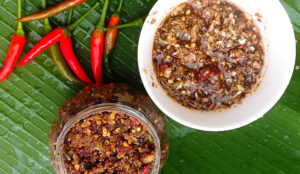Com Lam: The Traditional Bamboo Tube Rice of Vietnam’s Northwest
Com lam is a traditional dish from the mountainous regions of Vietnam’s Northwest, known for its unique preparation and the natural flavors it embodies. This rice dish, cooked in bamboo tubes, is not only a staple food but also an essential part of the cultural heritage of the ethnic communities, such as the Tay, Thai, and H’mong people, who reside in these regions. Simple yet flavorful, com lam offers a taste of the land and the culinary traditions that have been passed down through generations.
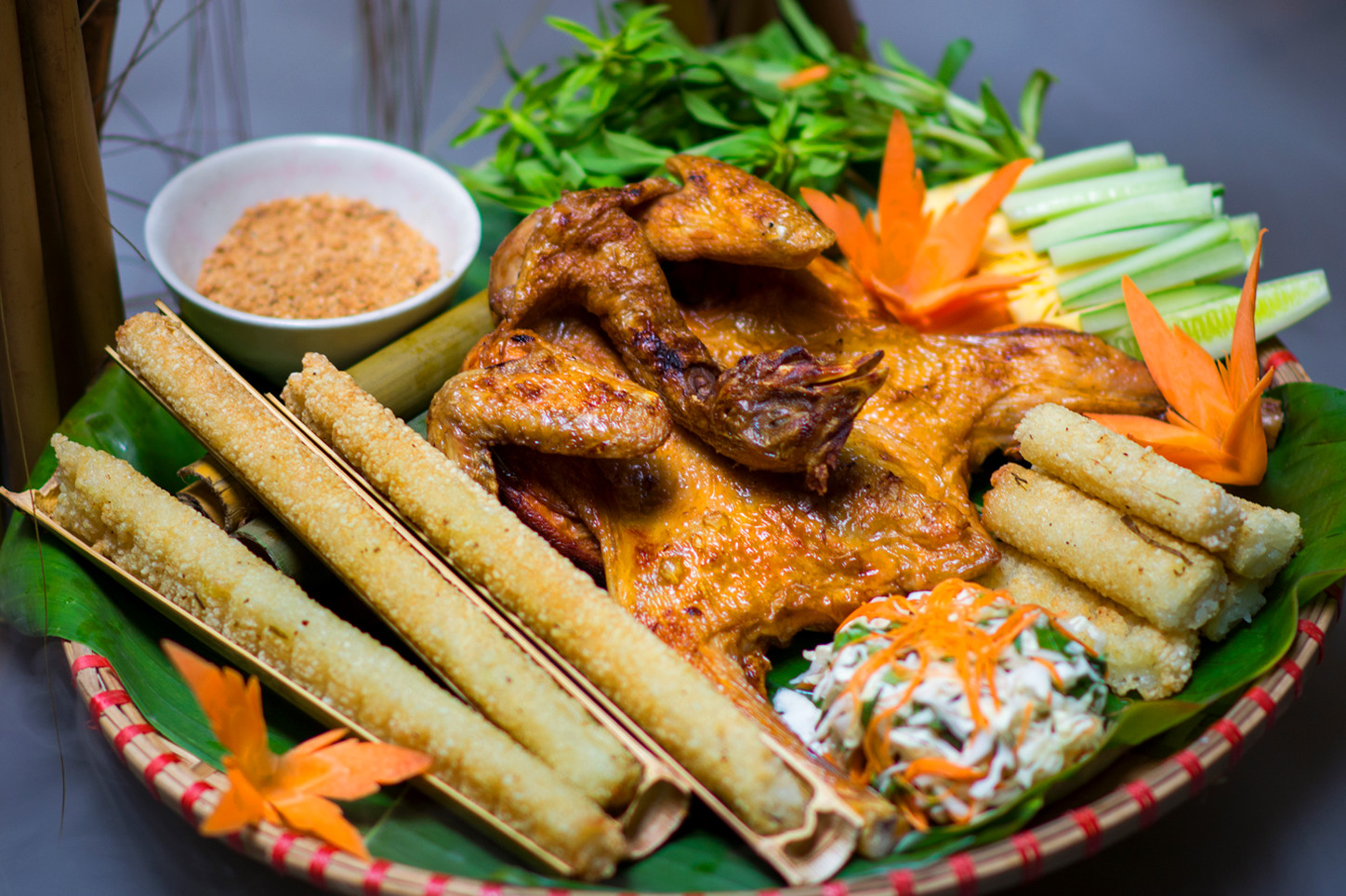
The Unique Preparation of Com Lam
The key feature of com lam lies in its method of cooking. The rice used is typically glutinous rice, which is soaked in water for several hours before being placed inside bamboo tubes. The bamboo tubes, naturally hollow, serve as both a cooking vessel and a source of flavor. The rice is packed tightly into the tube, sometimes mixed with a bit of salt and coconut milk, which imparts a subtle sweetness to the dish.
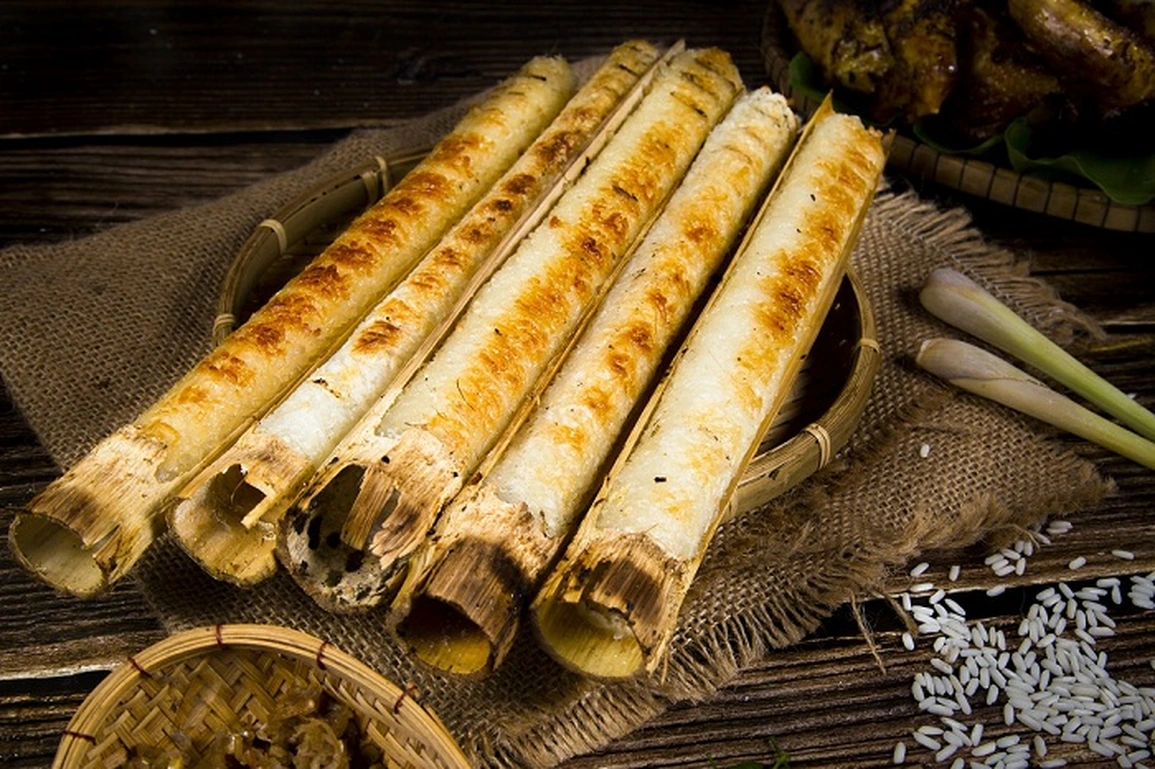
Once the rice is inside the bamboo tube, the tube is sealed with banana leaves and placed over an open flame or buried in hot embers to cook. The rice is steamed within the bamboo, absorbing the aroma of the wood, the coconut milk, and the smoky fragrance from the fire. The bamboo tube also acts as a natural container, preserving the moisture and ensuring that the rice remains tender and fragrant.
The cooking process takes several hours, allowing the rice to fully absorb the flavors of the bamboo and the fire. Once done, the rice is removed from the bamboo tube, revealing a perfectly cooked batch of com lam, with a unique aroma and texture that cannot be replicated using modern cooking methods.
The Cultural Significance of Com Lam
Com lam is more than just a dish in the Northwest of Vietnam; it holds deep cultural significance. Historically, the dish was prepared by the local ethnic groups as a portable, long-lasting source of food during their travels or on long journeys in the mountains. It was also used as an offering during festivals and rituals, symbolizing the connection between people and nature.
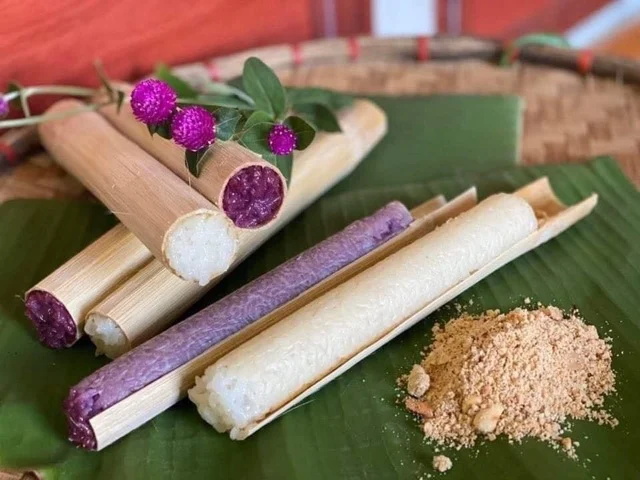
Today, com lam continues to be an important part of local traditions, especially during festive occasions such as the Lunar New Year (Tet) and weddings. It is often served as part of a larger feast and is shared among family and friends as a symbol of unity and hospitality. The preparation and sharing of com lam help to strengthen social bonds and create a sense of community.
The dish is also a representation of the ingenuity and resourcefulness of the people of the Northwest. The use of bamboo, a natural resource abundant in the region, demonstrates how the locals have traditionally utilized what is available in their environment to create something both practical and delicious.
How to Enjoy Com Lam
Com lam can be enjoyed in several ways. It is often served alongside other local specialties, such as grilled meat, wild vegetables, or fish, which complement the dish’s unique flavor. The rice itself has a slightly chewy, sticky texture, and the subtle sweetness from the coconut milk pairs beautifully with savory dishes.
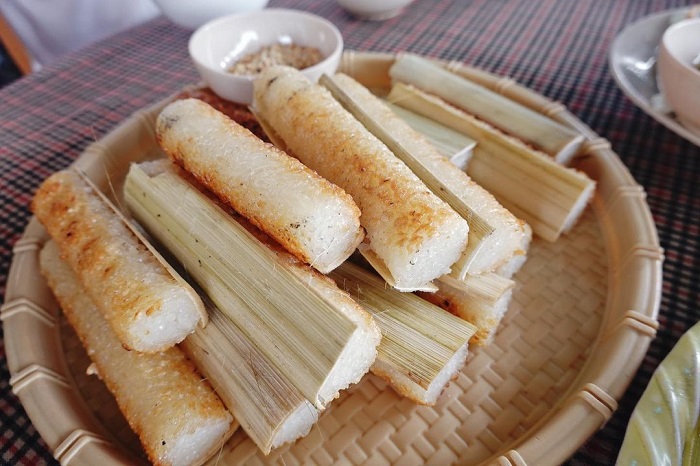
One of the best ways to enjoy com lam is to eat it freshly cooked, right after it has been removed from the bamboo tube. The rice is typically eaten by hand, as it has a rustic, homestyle feel that encourages sharing and connection. Some people also enjoy the rice with a side of mam (fermented fish sauce) or dipping sauces made from chili and garlic, which add a spicy kick and balance the dish’s natural sweetness.
For those visiting the region, com lam is often sold by street vendors or prepared at local markets, allowing visitors to experience this unique and delicious dish firsthand. It is a must-try for anyone who wants to taste the authentic flavors of the Northwest.

